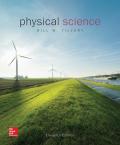
Concept explainers
An ore deposit consisting of chert and hematite occurs in a deposit measuring 2,500 m long by 1.800 m wide by 75 m high. The deposit has an average specific gravity of 4.3. How many tonnes of iron can potentially be obtained from the mine? (Specific gravity can be converted to density by multiplying by the density of water. Assume SGhematite = 5.3, SGchert = 2.5. and g/cm3 = tonne/m3.)
The tonnes of iron can potentially be obtained from the mine, if hematite and chert occurs in a deposit measuring
Answer to Problem 10PEB
Solution:
Explanation of Solution
Given data:
Specific gravity of hematite is
Specific gravity of deposit is
Specific gravity of chert is
Length of the deposit is
Width of the deposit is
Height of the deposit is
Density of deposit is
Formula used:
Write the percent of hematite:
Here,
Write the formula for density
Here,
Write the formula for volume:
Here,
The mass of hematite in the deposit by multiplying the total mass of the deposit by the ore grade:
The mass of iron by multipling the mass of hematite by the mass percentage of iron in hematite:
Explanation:
Recall the percent of hematite:
Substitute
Recall the formula for density
Rearrange:
Recall the formula for volume:
Substitute
Substitute
Recall the mass of hematite in the deposit by multiplying the total mass of the deposit by the ore grade:
Substitute
For Hematite:
The formula:
The formula weight of Hematite:
Recall the mass percent of an element in a compound can be found from:
Substitute
Recall the mass of iron by multiplying the mass of hematite by the mass percentage of iron in hematite:
Substitute
Conclusion:
The mass of iron is
Want to see more full solutions like this?
Chapter 17 Solutions
Physical Science
Additional Science Textbook Solutions
Physics of Everyday Phenomena
University Physics Volume 2
Physics for Scientists and Engineers with Modern Physics
University Physics Volume 3
Sears And Zemansky's University Physics With Modern Physics
Loose Leaf For Explorations: Introduction To Astronomy
- Which must be true for metamorphism to occur? A) The parent rock must be in solid form. B) Tons of pressure must be applied. C) The process must take place underground. D) All the abovearrow_forwardWhen it comes to protecting coastlines from erosion, rocks are sometimes used as a barrier. In order for a rock to not be shifted by waves, it must weigh 1,000 kilograms (approximately 1 ton). How big (what volume) does the rock need to be? You are using basalt, which has a typical density of 3200 kg/m3.arrow_forwardCalculate how much of a glacier is below the exterior of the ocean, given that the density of ice is 917 kg/m^3 and salt water has density 1025 kg/m^3.arrow_forward
- Chemical weathering can be determined by analyzing what property of a rock? (23.1) (a) temperature (b) density (c) composition (d) massarrow_forwardKEY TERMS 1. mineral (22.1) 2. silicates 3. Mohs scale 4. cleavage 5. rock (22.2) 6. igneous rocks 7. sedimentary rocks 8. metamorphic rocks 9. uniformitarianism 10. rock cycle 11. magma (22.3) 12. lava 13. plutons (22.4) 14. pyroclastics (tephra) 15. viscosity 16. caldera 17. sediment (22.5) 18. lithification 19. bedding 20. metamorphism (22.6) 21. contact metamorphism 22. shear metamorphism 23. regional metamorphism 24. foliation 25. hydrothermal metamorphism For each of the following items, fill in the number of the appropriate Key Term from the preceding list. b. _____ The internal property of a substance that offers resistance to flowarrow_forward
 An Introduction to Physical SciencePhysicsISBN:9781305079137Author:James Shipman, Jerry D. Wilson, Charles A. Higgins, Omar TorresPublisher:Cengage Learning
An Introduction to Physical SciencePhysicsISBN:9781305079137Author:James Shipman, Jerry D. Wilson, Charles A. Higgins, Omar TorresPublisher:Cengage Learning
